Air defense system of the DPRK: object anti-aircraft missile systems. Cold War rarities and new developments
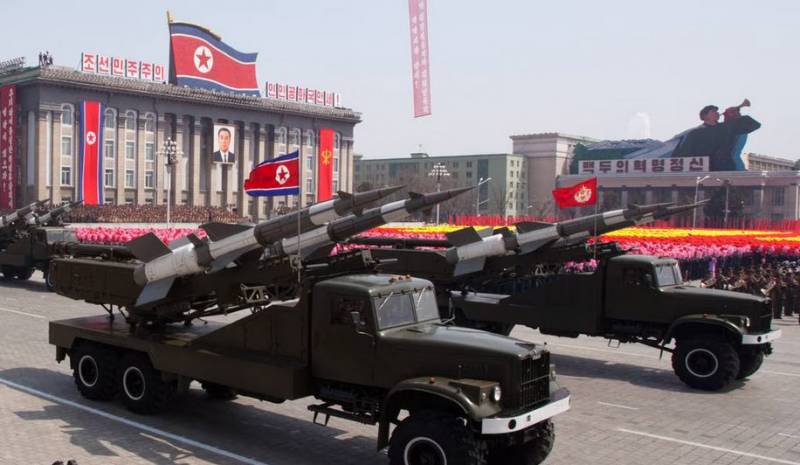
Until recently, the anti-aircraft missile forces of the DPRK, organizationally part of the air force, were equipped with obsolete complexes of Soviet and Chinese production. However, in recent years, information has appeared about a new generation of North Korean air defense systems, outwardly similar to the Soviet S-300P / S-400 anti-aircraft systems.
Objective anti-aircraft missile systems of the first generation of Soviet and Chinese production
The first North Korean air defense systems were the SA-75M "Dvina" with 10-cm guidance stations supplied by the Soviet Union in the mid-1960s. By that time, the S-75M Volkhov air defense system had entered service with the USSR Air Defense Forces, and the S-75M Desna was produced for the ATS countries - with CHP-75 operating in the 6-cm frequency range, which ensured better guidance accuracy and noise immunity compared with the 10-cm modification SA-75M, created in the late 1950s.
According to the practice that developed in the 1960s, more advanced versions of the "seventy-five" were transferred to the closest allies of the USSR. Simplified air defense systems were transferred to Third World countries or to states in which the necessary level of secrecy could not be provided, there was a risk of compromising important technical data and disclosing the characteristics of the complexes that form the basis of Soviet air defense.
For example, export SA-75Ms were delivered to India and the Democratic Republic of Vietnam. In India, the positions of Western intelligence were strong, and anti-aircraft systems were delivered to North Vietnam through the territory of China, relations with which had been spoiled by that time. Apparently, the persons responsible for the export of Soviet weapons, at that moment they considered Pyongyang, which had close relations with Beijing, to be an insufficiently reliable ally and took into account the risk of new air defense systems entering the PRC.
In total, 38 SA-75M air defense systems, 1243 B-750V air defense systems and 10 technical divisions were delivered to the DPRK. Between 1970 and 1976, North Korean SA-75M air defense systems were upgraded by Soviet mobile brigades. In 1973, maintenance of anti-aircraft missiles was carried out. In the mid-1970s, an enterprise for the repair of elements of air defense systems and missiles began operating in the vicinity of Pyongyang.
For a long period of time, the SA-75M air defense systems were the most long-range element of the North Korean object air defense, capable of hitting air targets at a distance of up to 32 km and an altitude of 25 km. The probability of hitting a target with one missile in the absence of organized interference is about 70%.
Basically, anti-aircraft missile systems were deployed along the “front line” (as the demilitarized zone is called in the DPRK) outside the range of South Korean artillery, on the coast, as well as around important administrative, industrial and defense facilities. For these complexes, a large number of spare positions were equipped.
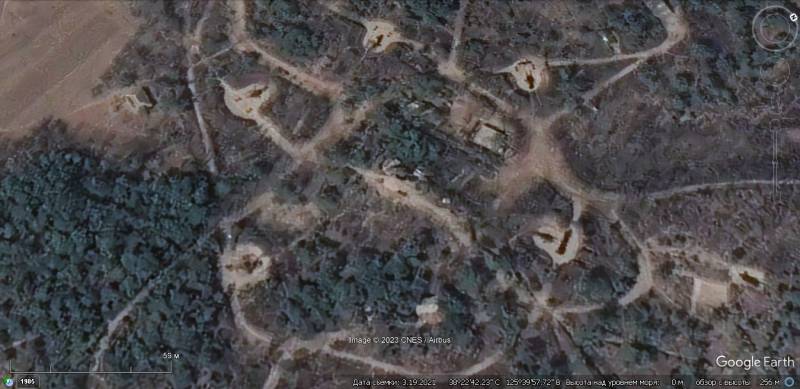
Satellite image of Google Earth: the position of the S-75 air defense system in the vicinity of Sinchon is approximately 45 km north of the border with South Korea
Part of the SA-75M air defense systems covering Pyongyang were based permanently. In this case, anti-aircraft missile launchers and other elements of the complex were protected by concrete structures.
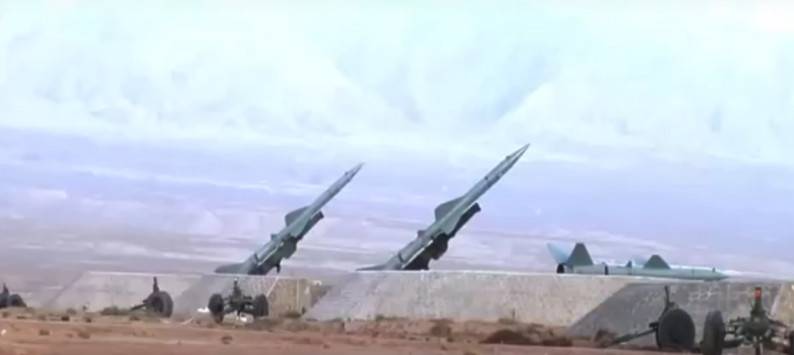
In the mid-1980s, the Chinese HQ-2 air defense systems (Chinese version of the S-75) appeared in service with the North Korean air defense forces. Various sources say that there were from 6 to 12 divisions. There are also discrepancies in types - it could be HQ-2A (adopted in 1978) and HQ-2J (adopted in 1984). Serial assembly of the HQ-2 air defense system in China continued until the end of the 1990s. In addition to the DPRK, these complexes were exported to Albania, Iran and Pakistan.
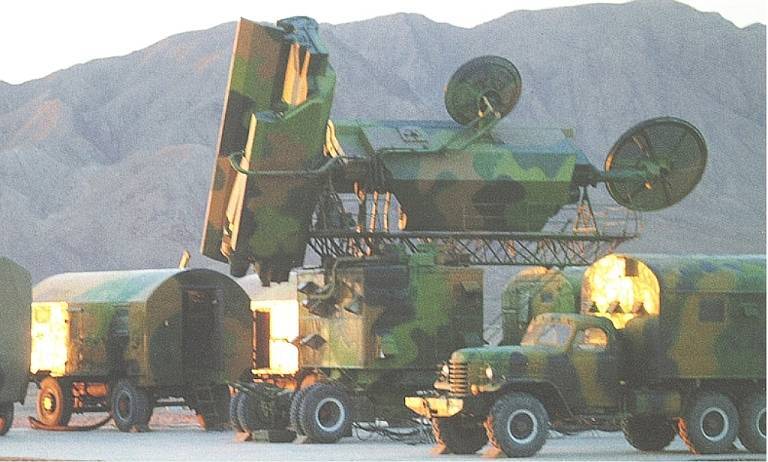
The ZUR guidance station and the HQ-2 air defense missile and control cabins in combat position
It is possible that Pyongyang received various modifications of Chinese air defense systems, delivered in several batches at different times. It is likely that the last delivery of Chinese air defense systems took place in the 1990s.
The most advanced clone of the S-75, created in China, is the HQ-2J modification, which appeared after Chinese experts thoroughly familiarized themselves with the Soviet S-75M Volga air defense systems and the B-755 air defense system, delivered to Egypt before 1973. After Egyptian President Anwar Sadat decided to make peace with Israel and set a course for rapprochement with the United States, all Soviet military advisers were expelled from Egypt. Under these conditions, intelligence from the Middle Kingdom managed to find approaches to the Egyptian leadership, and a number of samples of the latest Soviet-made military equipment and weapons were exported to China, which gave a new impetus to the improvement of Chinese combat aircraft and air defense systems.
For the HQ-2J air defense system, a new anti-interference guidance station CHP SJ-202В and a missile with a launch range of up to 40 km have been developed. After getting acquainted with the Soviet B-755 missiles received from Egypt, the new Chinese anti-aircraft missile used more advanced radio control and radio equipment, an autopilot, a radio fuse, a warhead with ready-made submunitions, an adjustable thrust liquid jet engine and a more powerful launch accelerator. At the same time, the mass of the rocket increased to 2330 kg. SAM flight speed - 1250 m / s, the maximum speed of the fired target - 1150 m / s. The HQ-2J anti-aircraft missile system, thanks to the introduction of an additional target channel in the CHP SJ-202В, is capable of simultaneously firing two targets in the working sector of the guidance radar with up to four missiles pointing at them.
In the brochures presented in the late 1980s and early 1990s at international arms exhibitions, it was said that the probability of being hit by one missile in the absence of organized interference for the HQ-2J air defense system is 92%.
In general, the air defense systems of the HQ-2 family repeated the path traveled in the USSR with a delay of 12-15 years. At the same time, the PRC has not created an analogue of the Soviet B-759 (5Ya23) SAM with a firing range of up to 56 km, an engagement height of 100-30 m and a maximum target speed of up to 000 km/h.
In 1986, the USSR supplied the DPRK with three S-75M3 Volga firing divisions, one technical division, 108 V-759 missiles and four training missiles. This complex, compared with the SA-75M "Dvina", had greater noise immunity, improved pointing accuracy and a greater firing range. Due to the presence of a television-optical sight at the guidance station, the noise immunity and secrecy of the application have increased. If we do not take into account the last serial S-75M4 in this family, which was not delivered abroad, produced in a very limited quantity, then the S-75M3 air defense system can be considered the pinnacle of development of the "seventy-five".
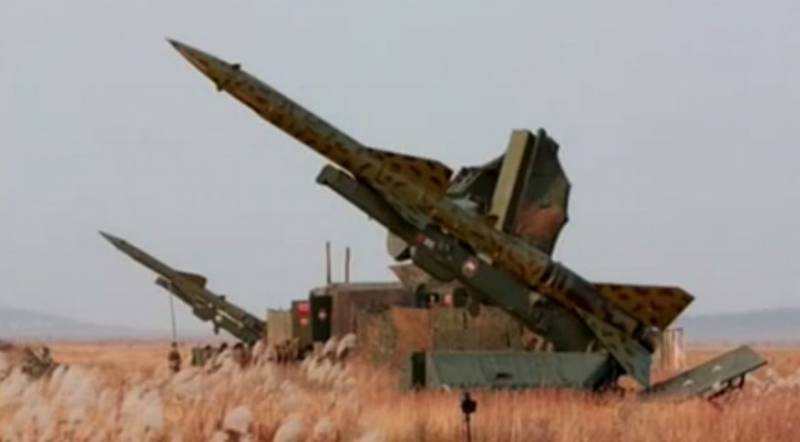
It is appropriate to mention that the serial production of the S-75 in the USSR was completed in the same 1986, and the last S-75M3 air defense systems built were intended for export deliveries to North Korea, Syria and Romania.
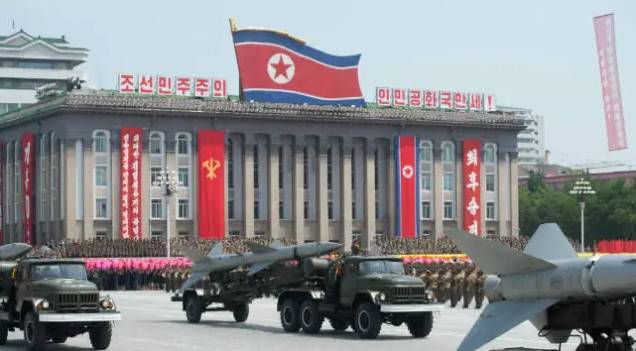
It is not possible to say exactly how many capable air defense systems of the S-75 family are left in the DPRK now. Western directories speak of forty deployed divisions, but this number is certainly overestimated. When analyzing satellite images that are freely available, three dozen positions of the C-75 and HQ-2 air defense systems were found on the territory of the DPRK.
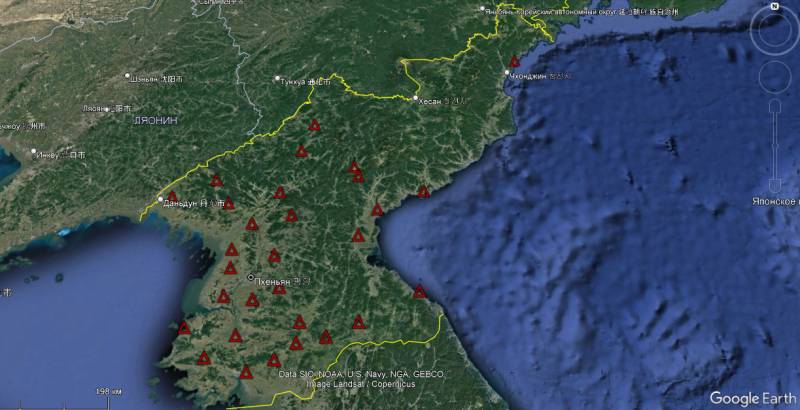
The layout of the S-75 and HQ-2 air defense systems on the territory of the DPRK
Currently, the performance of the SA-75M air defense systems, whose age is approaching sixty years, is extremely doubtful. The number of relatively fresh Soviet C-75M3 and Chinese HQ-2A / J does not exceed 15 units.
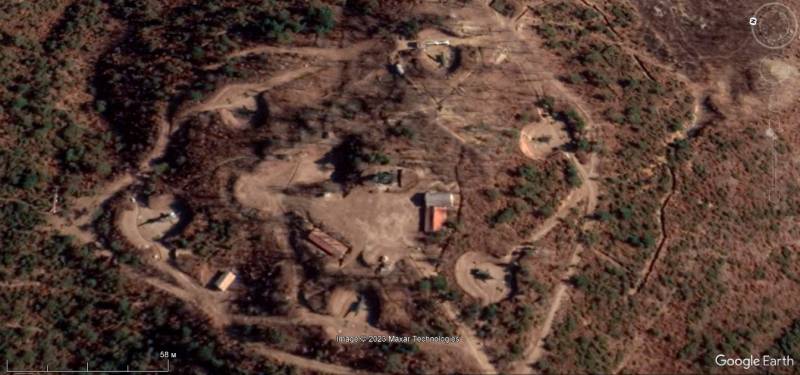
Satellite image of Google Earth: the position of the S-75 air defense system 4 km southwest of Phiyeon
It can be assumed that the old SA-75M air defense systems are a "scarecrow". The B-750V anti-aircraft missiles have long exhausted their resources, and the limited-operational missile guidance stations built on electric vacuum devices and located in positions that are clearly visible from the air, when turned on, should simulate a threat, irradiating South Korean and American combat aircraft, and also divert anti-radar missiles and other means of destruction.
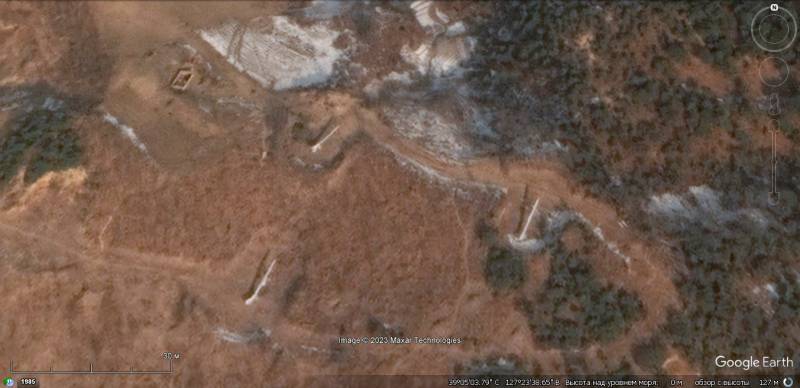
Satellite image of Google Earth: false position of the S-75 air defense system west of Wonsan
Moreover, some of the old positions, where the SA-75M air defense systems were originally deployed, became false after the withdrawal of real systems. Even on low-resolution satellite images, it is noticeable that they are equipped with mock-up missiles, there are no guidance stations, command posts, P-12/18 surveillance radars of the P-XNUMX/XNUMX meter range, and towed diesel power plants necessary to ensure the operation of the anti-aircraft battalion.
A close examination of the positions of the North Korean S-75 air defense systems shows that most of the launchers are not equipped with anti-aircraft missiles. At best, out of six launchers, only two are loaded with missiles, which indicates that the real level of combat readiness is low.
In the near future, it is expected that all North Korean air defense systems of the S-75 family will be withdrawn from service due to the exhaustion of the hardware resource and the lack of conditioned anti-aircraft missiles.
In the mid-1980s, North Korea received 6 (according to other sources - 8) S-125M1A Pechora-M1A air defense systems, two technical divisions, 216 V-601PD air defense systems and 14 training missiles. Three Akkord-75/125 training complexes were also transferred to the DPRK.
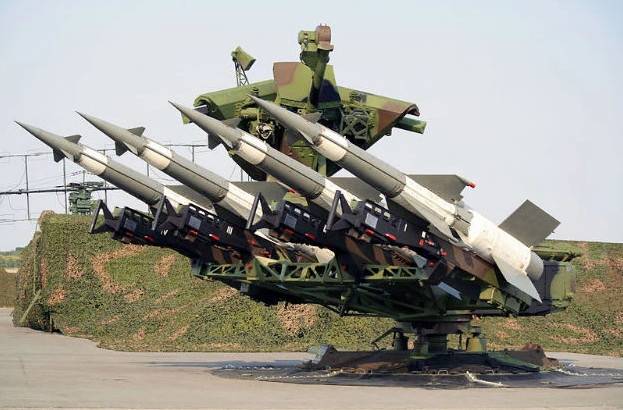
S-125 became the first anti-aircraft complex of the country's air defense forces with solid-propellant anti-aircraft missiles. The use of solid fuel in SAM engines has a number of significant advantages over anti-aircraft missiles fueled with liquid fuel and an oxidizer.
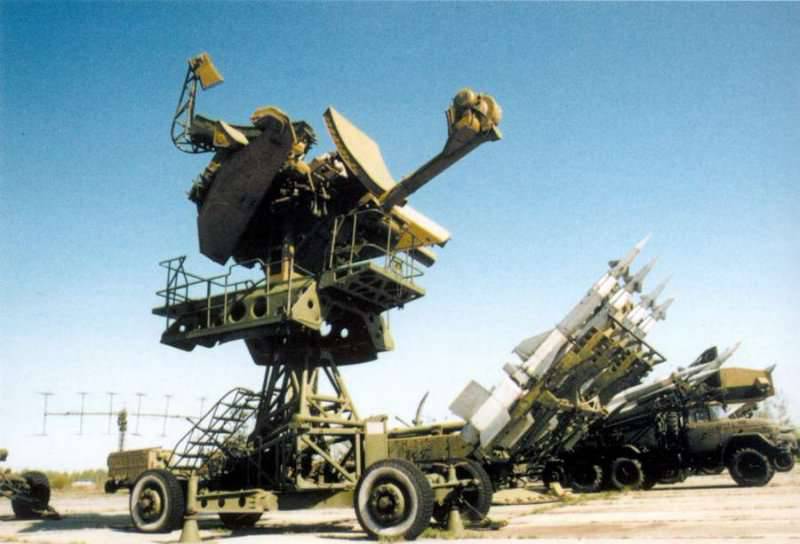
Compared to the S-75 air defense system, which was very limited in mobility, the combat assets of which were often deployed on capital concrete positions, when creating the low-altitude S-125 air defense system, more attention was paid to increasing fire performance and mobility. All equipment was placed in towed car trailers and semi-trailers.
The S-125M1A air defense system is able to effectively deal with air attack weapons operating at low altitudes. The minimum height of destruction by anti-aircraft guided missiles V-601PD is 25 m. The destruction zone is 2,5-25 km. Ceiling - 18 km.
The SNR-125M guidance station includes a television detection and target tracking system of increased accuracy and noise immunity based on the Karat television optical sight. To ensure the possibility of conducting autonomous combat operations without receiving target designation from the automated control system of the regimental level, the S-125M1A divisions are given mobile radars P-18 and P-19.
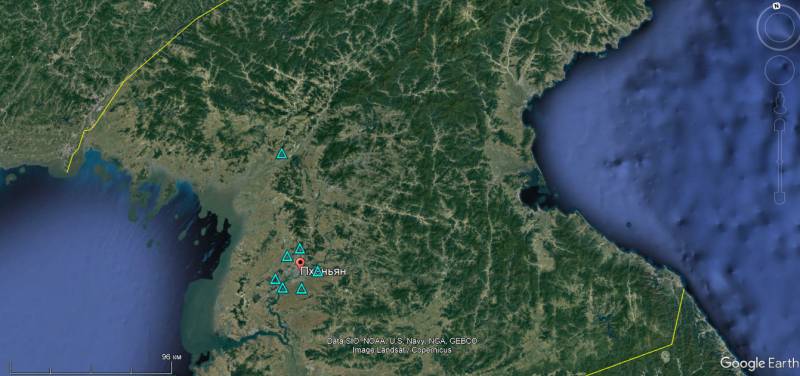
The layout of the stationary positions of the S-125M1A air defense system on the territory of the DPRK
As can be seen in the diagram, most of the North Korean Pechora-M1A air defense systems were originally located around Pyongyang, forming a near air defense zone. But at present, stationary, well-equipped positions for combat duty are not used.
The command of the Air Force and Air Defense of the DPRK is well aware that with the current level of development of technical means of reconnaissance and high-precision weapons, complexes permanently located in places known to a potential enemy will be quickly destroyed in the event of a full-scale armed conflict.
In this regard, about 20 years ago, the main elements of the S-125M1A air defense system - the antenna post of the guidance station, the hardware cabin and launchers - were mounted on the KrAZ-255B heavy cargo chassis. At the same time, the number of missiles ready for use on a self-propelled launcher was reduced from four to two units.
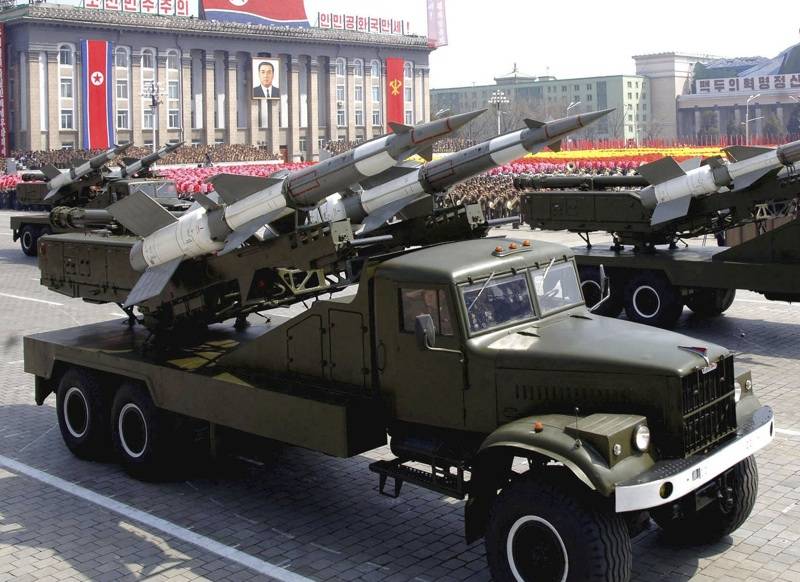
Apparently, Korean specialists were able to modernize the hardware of the complex and upgrade solid fuel in rockets. It is also possible that, by analogy with the MiG-21bis fighters and anti-aircraft guns illegally acquired in the former republics of the USSR, the DPRK intelligence managed to buy additional V-601PD missiles.
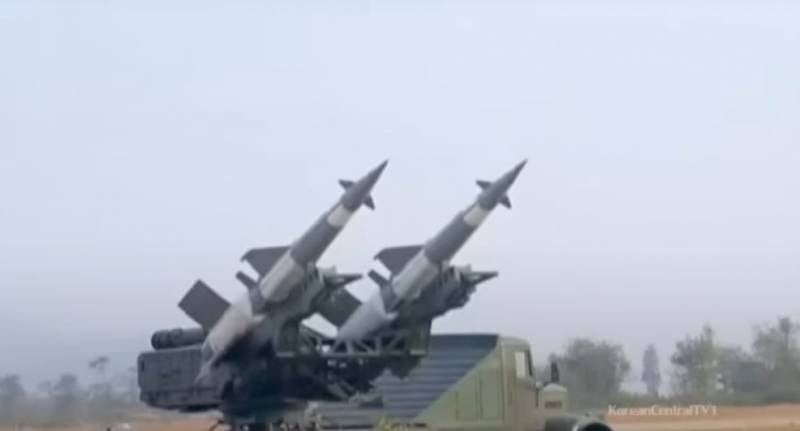
Most of the time, North Korean S-125M1As are in shelters carved into the rocks, where they are invulnerable to guided bombs and cruise missiles. In the areas of training deployment and combat training, the equipment of low-altitude air defense systems gets on the roads at night.
In 1987, North Korea acquired two long-range S-200VE air defense systems (channels) and 72 V-880E missiles, for which one technical position was intended. First of all, this complex was intended to counter SR-71 strategic high-speed reconnaissance aircraft, CR-135 long-range electronic reconnaissance aircraft and strategic bombers.
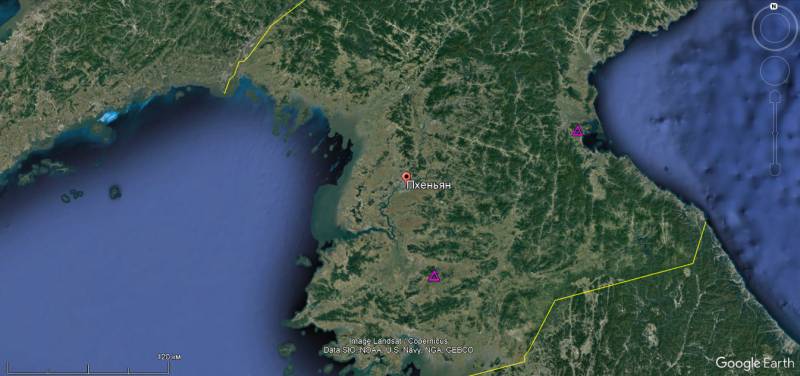
The layout of the positions of the S-200VE air defense systems on the territory of the DPRK
The S-200VE firing system consists of a command post, firing channels and a power supply system. The firing channel included a target illumination radar and a starting position with launchers and loading machines. The deployment of the complex was carried out at a well-prepared position in terms of engineering, where capital structures and shelters were erected.
The V-880E liquid-propellant missile system with a semi-active radar guidance system, used as part of the export Vega, is comparable in size and weight to the MiG-21 fighter.
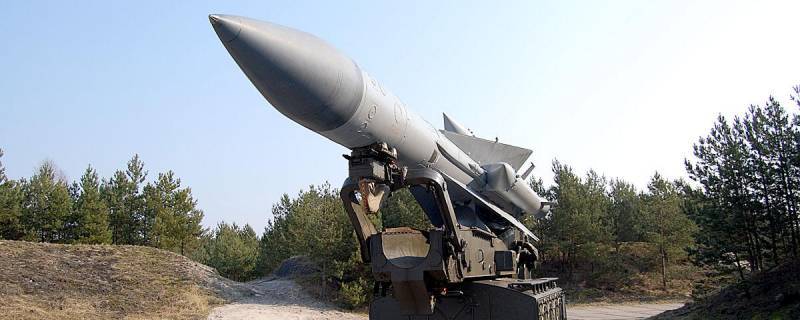
SAM V-880E
The length of the rocket was 10 mm. Starting weight - 800 7 kg. Firing range - up to 100 km. Ceiling - 240 km. The minimum height of the defeat is 35 m.
Without exception, all modifications of the S-200 were very expensive and difficult to operate. Maintenance, refueling, transportation and loading of missiles on the "guns" was a very difficult task. The rocket engine ran on toxic fuel and an aggressive oxidizer, which required the use of special protective equipment.
However, the strength of the "two hundred" was the range and height of destruction, unattainable until recently for solid-propellant missiles. In addition, the semi-active guidance system, by the standards of the 1970-1980s, had high noise immunity, and a powerful warhead made it possible to destroy several aircraft flying in close formation.
One long-range air defense system was deployed on the east coast near the port of Wonsan. Another complex was on combat duty at a position in the mountains, located 20 km southeast of the city of Sariwon.
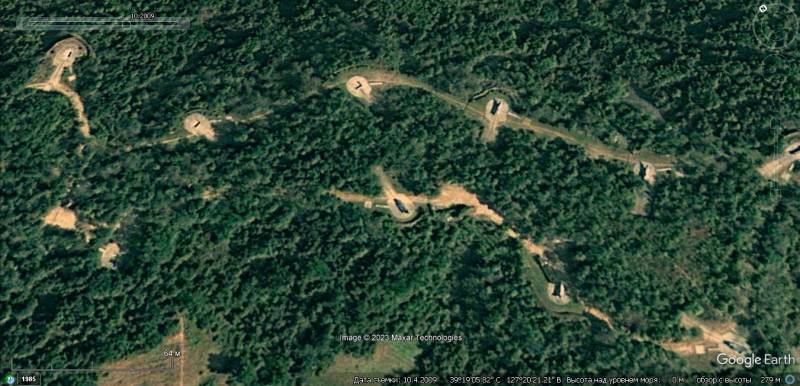
Satellite image of Google Earth: the position of the S-200VE air defense system is 30 km northwest of the Wonsan port. The picture was taken in 2009
A significant part of the territory of the Republic of Korea was within the reach of the North Korean S-200VE air defense systems, including the airspace over Seoul and the large Osan airbase. However, it should be understood that the capabilities of the long-range complex in terms of firing at low-altitude air targets were severely limited, which was also aggravated by the mountainous terrain of the Korean Peninsula.
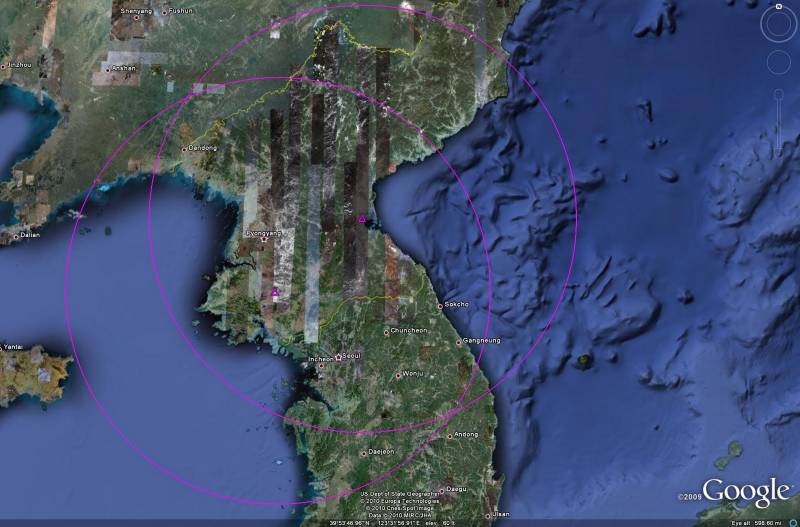
The zone of destruction of the North Korean S-200VE air defense systems
Nevertheless, the V-880E missiles could quite successfully destroy large airliners, heavy military transport aircraft, tankers, long-range reconnaissance aircraft and AWACS aircraft at a distance of more than 200 km from the starting position.
In addition to the defense component, the S-200VE air defense systems were one of the most striking visual symbols of the military power of North Korea. Very large V-880E anti-aircraft missiles looked impressive at military parades and always attracted attention.
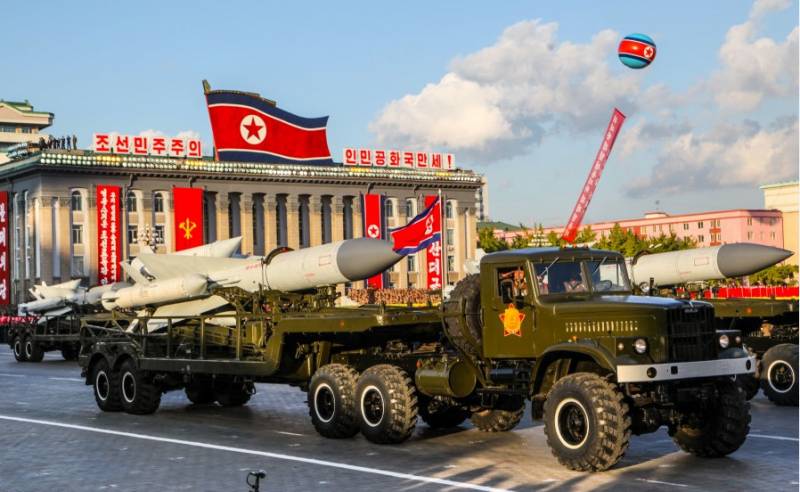
Approximately 10 years ago, the North Korean S-200VE air defense systems were removed from combat duty. A country under international sanctions and experiencing economic difficulties has found it very difficult to maintain a monstrous air defense system designed to counter strategic bombers and high-speed long-range reconnaissance during the Cold War era. Experts in the field of air defense also write about the development of the resource of the very complex and expensive V-880E missiles and the possible shortage of liquid fuel.
After the completion of the main military service story S-200VE in the DPRK has not ended. Relatively recently, information appeared that after another aggravation of relations between Pyongyang and Seoul, target illumination radars (ROCs) designed to guide anti-aircraft missiles were placed on hills near the demilitarized zone.
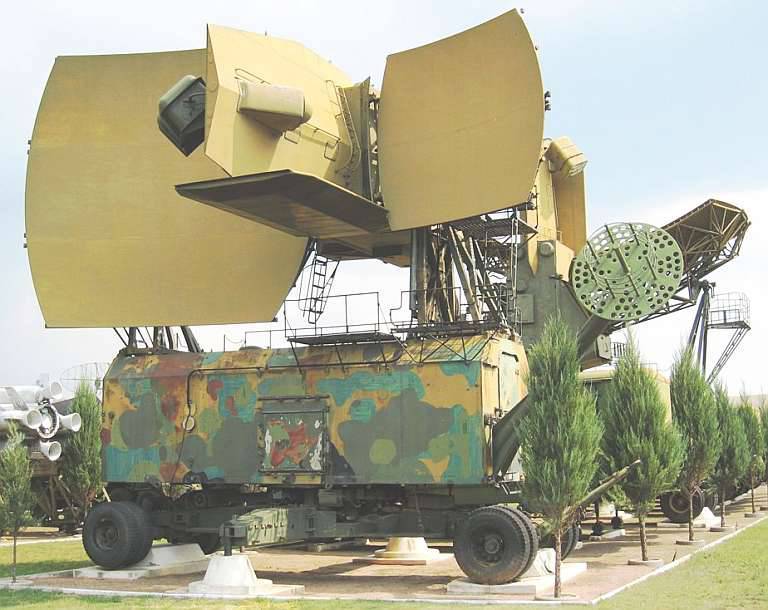
S-200VE target illumination radar
When the station is operating at maximum radiation power, the operators of the ROC S-200VE have the ability to detect and capture a target at a distance of about 350 km. Thus, the North Korean military terrorized the pilots of the Republic of Korea Air Force, in the cockpits of which, after being taken for escort by the ROC beam, the warning system began to chirp, signaling the guidance of an anti-aircraft missile.
North Korean long-range air defense systems of a new generation
In the 21st century, North Korea intensified work on the creation of its own modern long-range air defense systems. Most likely, the development of new air defense systems was carried out jointly with Iran, with consulting support from China and using Chinese electronics. Observers note the similarity of the new North Korean air defense system with the Iranian Bavar-373.
For the first time, elements of the Pongae-5 air defense system (US designation KN-06) were presented in Pyongyang at a military parade held in October 2010.
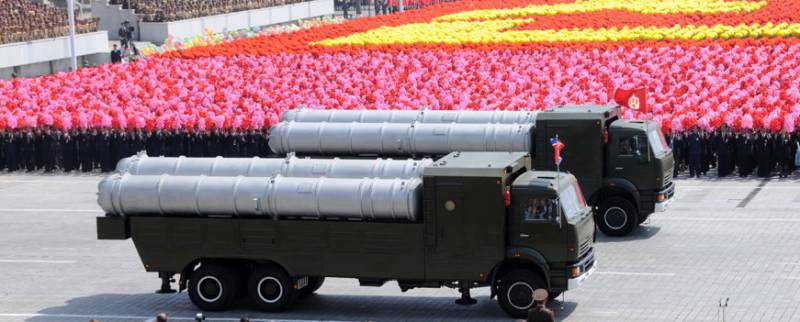
Initially, self-propelled launchers were demonstrated on the chassis of a Taebaeksan 96 truck (Korean version of KamAZ 55111) with two missiles in the TPU. Later, SPUs with three missiles appeared.
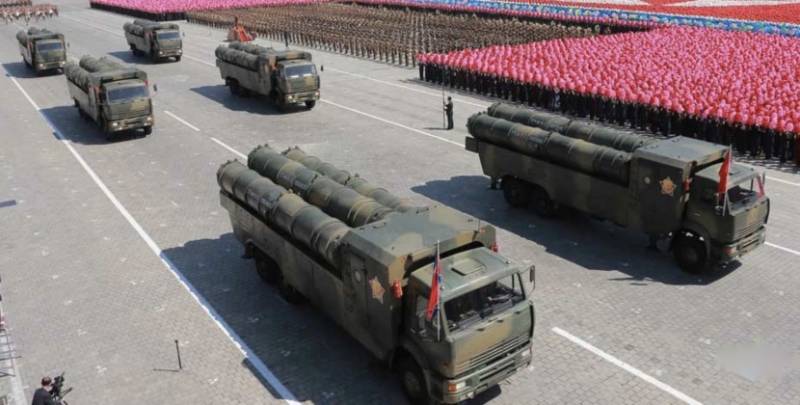
An anti-aircraft missile guidance station equipped with a multifunctional radar with AFAR was mounted on the same wheelbase. Mobile diesel power plants, communication and control vehicles are placed in vans mounted on two-axle trucks.
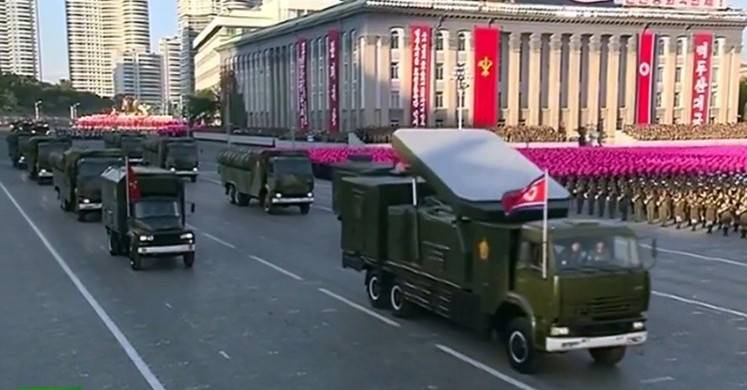
The exact characteristics of the Pongae-5 air defense system are unknown. A number of sources claim that the firing range against high-altitude targets can reach 150 km. But in the expert community, such information is questionable. Test firing footage published in April 2016 shows that the Pongae-5 air defense system uses a missile similar to the Soviet 5V55R missile.
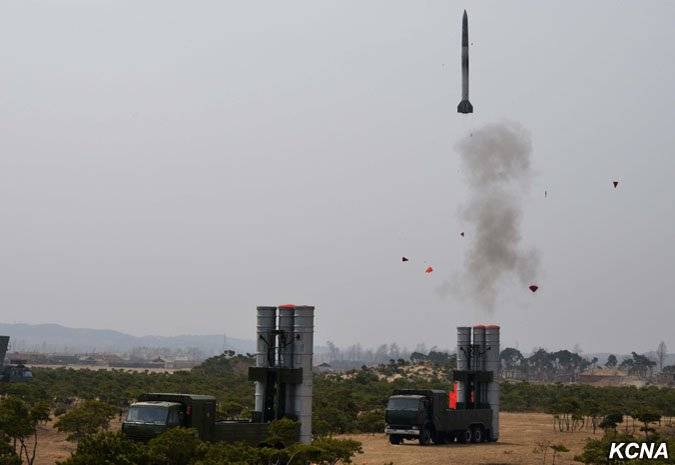
Western experts estimate the mass of North Korean solid-propellant missiles in the range from 1300 to 1700 kg. Length - 6,8-7,2 m. Diameter - 0,45-0,50 m. Warhead weight - 120-180 kg. The Soviet 5V55R rocket weighs 1665 kg, has a diameter of 508 mm and a length of 7,25 m, while the maximum firing range is 75 km. In the late 1980s, a modernized 5V55R missile appeared with a maximum firing range of 90 km, but it is extremely unlikely that North Korea, without its own developments, managed to develop a more efficient solid fuel formulation and immediately surpass Soviet achievements in the indicated dimensions of the rocket.
There are also certain questions on guidance. It is known that the first radio command ZUR 5V55K, designed for the S-300PT air defense system, had a firing range of no more than 47 km, which was limited by the guidance system. It was possible to increase the affected area on the S-300PT-1 and S-300PS air defense systems, in which missiles with "radio command guidance of the second kind" were used (with sighting through missiles). It was possible to cross the range threshold of 150 km on the S-300PM air defense system with the 48N6 semi-active radar missile. But compared to the missiles of the 5V55 family, this missile system has become larger.
One way or another, years have passed since the first display of the Pongae-5 air defense system until relatively successful firing. As of May 2017, this system was still being tested.
Foreign experts believe that the Pongae-5 air defense system has already reached the required level of efficiency and operational reliability. According to the Center for Strategic and International Studies (CSIS), the DPRK air defense forces can have approximately 156 launchers, which corresponds to 26 anti-aircraft divisions. Personally, such assessments do not inspire confidence in me - even for countries with a higher level of development of electronics and mechanical engineering, such rates of production of long-range air defense systems are difficult to implement. In addition, the deployment of such a number of new air defense systems cannot be hidden from the American, Japanese and South Korean intelligence services, which rely on radio equipment, reconnaissance satellites and agents. To train calculations, it is necessary to go out into the field with the inclusion of multifunctional radars and high-frequency data transmission lines with work on real air targets. It is also hard to imagine that all modern air defense systems were in underground fortified storage facilities with thick steel explosion-proof doors, at a time when the antediluvian S-75s and their Chinese clones protect the country's sky.
At a military parade in Pyongyang on October 10, 2020, launchers of the Pongae-6 long-range anti-aircraft missile system were shown.
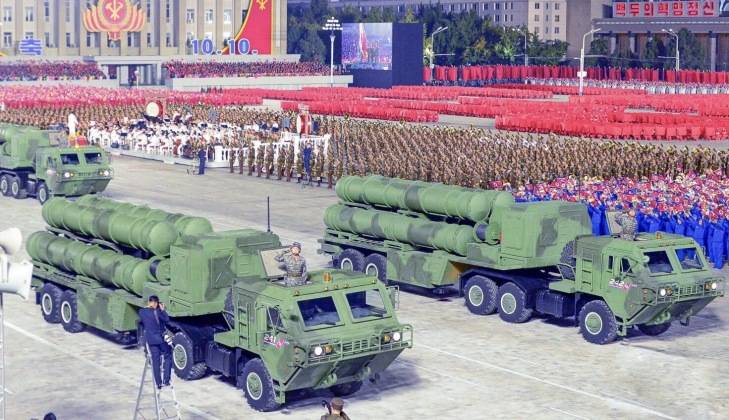
New launchers with four TPKs are made towed due to the longer length than the KN-06 air defense system. Externally, the Pongae-6 launcher resembles the launchers of the Russian S-300PMU-2 and S-400 complexes.
Later, anti-aircraft missiles used as part of the Pongae-6 air defense system were demonstrated. Unlike the Pongae-5 SAM, the Pongae-6 rocket is made in two stages, the aerodynamic rudders are in the front, and it has become significantly longer.
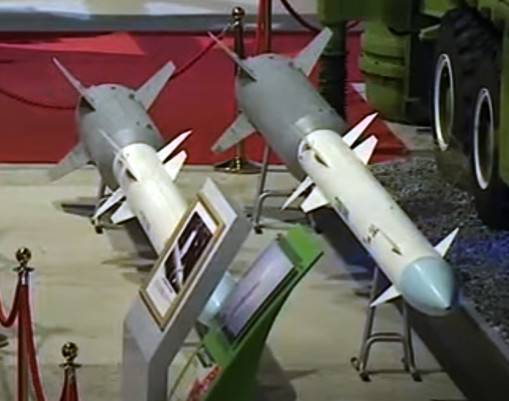
Test firing was carried out on September 30, 2021, and now the complex is in the process of fine-tuning.
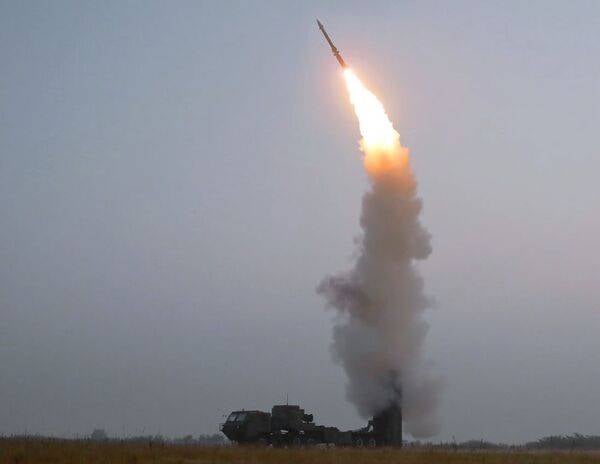
There is no doubt that Pyongyang would like to receive a complex that would become a "long arm" and could compensate for the decommissioning of the long-range S-200VE air defense system. Western publications say that the new North Korean air defense system may have a firing range of up to 600 km, but there is no evidence for this. To hit a target at such a large distance, it is necessary to create a very complex combined guidance system that uses different flight control principles in different parts of the trajectory, which will undoubtedly affect the complexity and cost of the missile. In addition, it is doubtful that the DPRK has radar or any other means of detection capable of reliably detecting and steadily tracking aerodynamic and ballistic targets at such a distance.
However, as follows from the experience of combat use, a very large possible firing range is of no practical importance. The shelling of large targets flying at high altitude and at distances close to maximum is very rare in real conditions. Interception of typical targets in modern conditions, such as cruise missiles or tactical / carrier-based aircraft aviation, flying with an envelope of the terrain, in most cases is possible at a distance of about 50 km. Thus, in the overwhelming majority of cases, taking into account the cost of missiles, ground equipment and equipment, a complex with a maximum firing range of 90 km is preferable to an anti-aircraft system that hits 370 km.
It is likely that in the foreseeable future the DPRK will be able to bring to mind the new Pongae-6 air defense system. But given the state of the North Korean economy and real defense needs, most likely, the military will give preference to the mass production of less long-range systems that cost less.
The ending should ...
Information